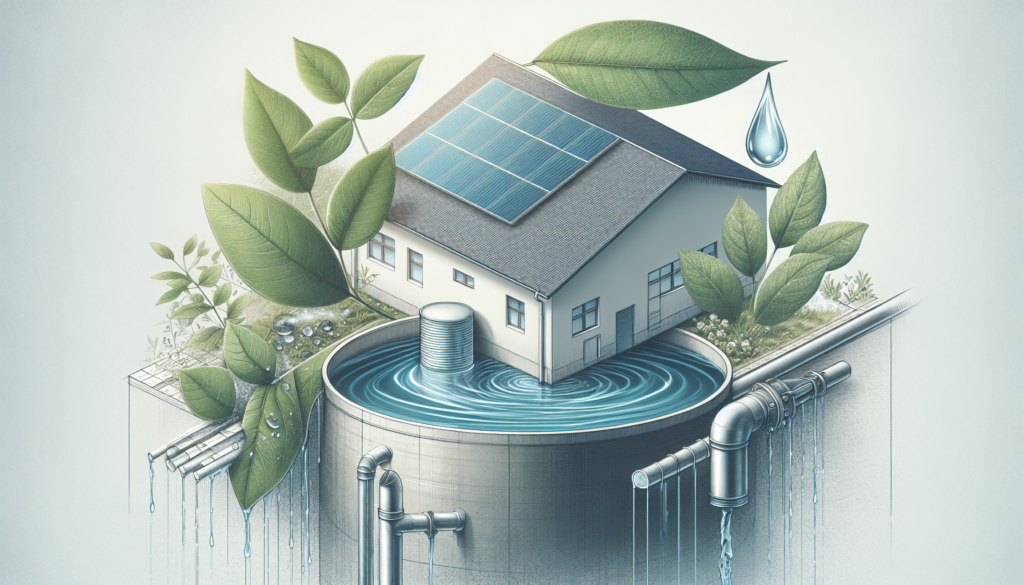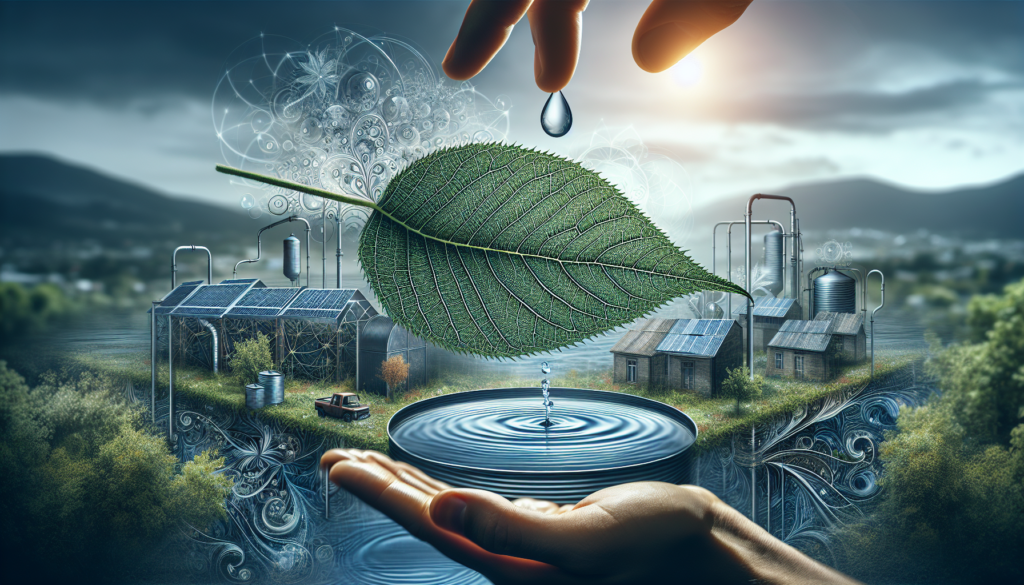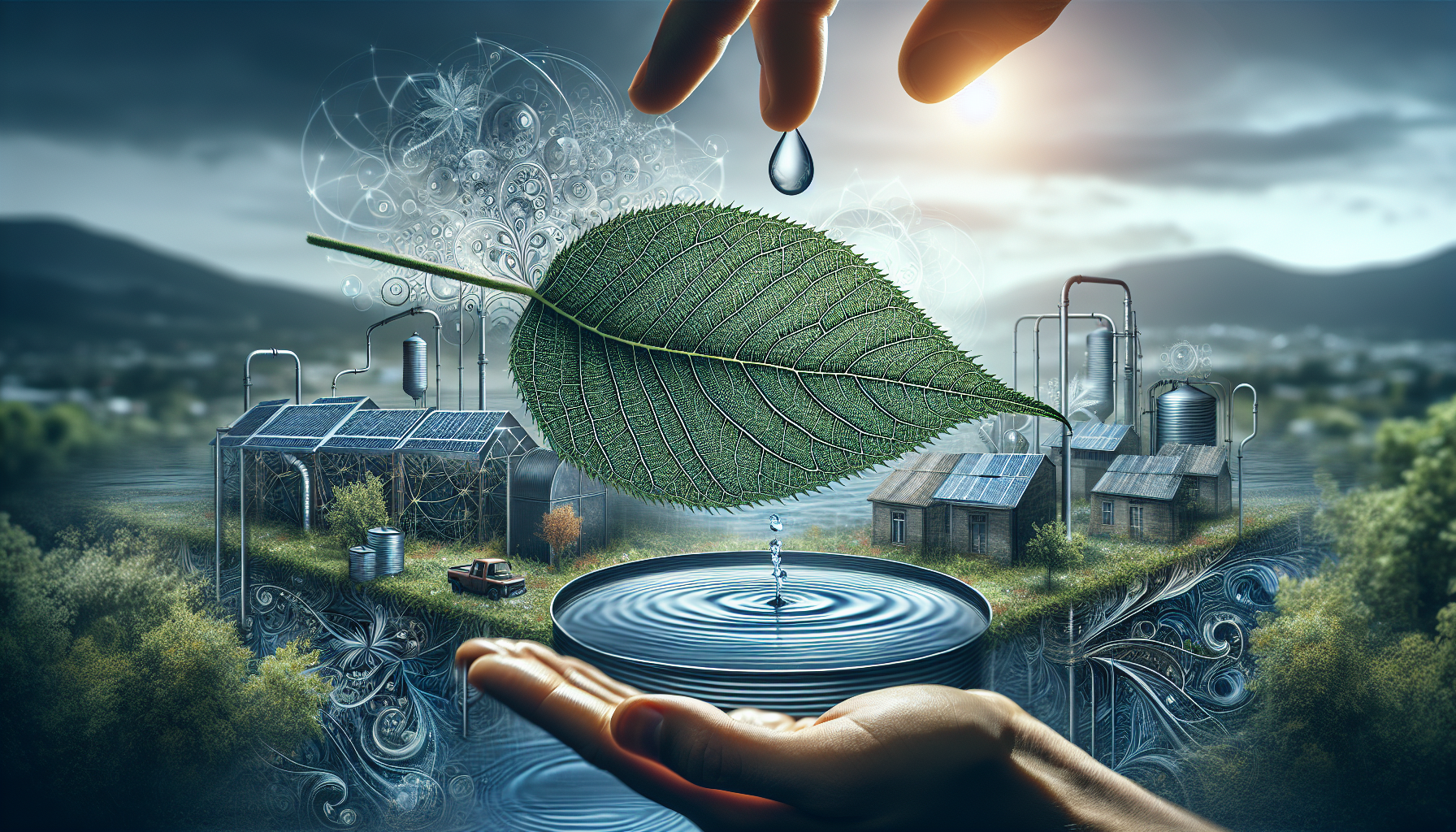In this article, you will discover various methods and the numerous benefits of rainwater harvesting. From simple techniques like collecting rainwater in barrels to more advanced systems such as underground storage tanks, there are plenty of options to suit your needs and environment. By utilizing rainwater, you can conserve water, reduce your water bill, and contribute to a more sustainable future. Stay tuned to explore the fascinating world of rainwater harvesting!
Methods of Rainwater Harvesting
Rainwater harvesting is the process of collecting and storing rainwater for future use. With the increasing concerns about water scarcity and the need for sustainable water management, rainwater harvesting has gained significant traction as an effective solution. There are various methods of rainwater harvesting, each suitable for different settings and requirements. In this article, we will explore three common methods: surface water harvesting, rooftop rainwater harvesting, and rainwater collection from landscapes.
Surface Water Harvesting
Surface water harvesting involves collecting rainwater from natural or man-made water bodies such as ponds, tanks, dams, and reservoirs. These methods are particularly useful in areas with abundant rainfall and where there is a need to store large volumes of water for various purposes.
Ponds and Tanks
Ponds and tanks are commonly used for surface water harvesting. These are typically large structures that can hold substantial amounts of water. They are designed to capture rainwater runoff, allowing the water to accumulate over time. Ponds and tanks can be used for irrigation, livestock watering, and even recreational activities.
Dams and Reservoirs
Dams and reservoirs are more extensive water storage systems that are often used for surface water harvesting on a larger scale. These structures are designed to impound water and create a reservoir, which can serve as a primary source of water for communities or for other purposes such as hydroelectric power generation.

Rooftop Rainwater Harvesting
Rooftop rainwater harvesting is a method that involves collecting rainwater from rooftops and storing it for later use. This method is particularly suitable for residential and small-scale applications and offers several benefits in terms of water conservation and resource management.
Rain Barrels
Rain barrels are one of the simplest and most cost-effective methods of rooftop rainwater harvesting. They are large containers placed under downspouts to collect rainwater from the roof. The collected water can be used for various non-potable purposes such as watering plants, cleaning, and even for certain household chores.
In-Ground Cisterns
In-ground cisterns are typically larger and more permanent storage solutions for rooftop rainwater harvesting. These are underground tanks designed to capture and store rainwater collected from rooftops. In-ground cisterns can be connected to a filtration system to ensure the harvested water is safe for use. The stored water can then be used for irrigation, toilets, and other household needs.
Rainwater Diverters
Rainwater diverters are devices installed on downspouts to direct rainwater from the roof into a desired storage or collection system. These diverters can be simple attachments that divert water into rain barrels or more advanced systems that direct the water into a network of underground pipes leading to larger storage tanks or cisterns.
Rain Chains
Rain chains are an aesthetically pleasing alternative to traditional downspouts. They are decorative chains or links that hang from the edge of the roof and guide the rainwater downward. Rain chains can be connected to rain barrels or other storage systems, allowing for efficient rainwater collection while adding a visual element to the building’s exterior.
Rainwater Collection from Landscapes
Rainwater collection from landscapes involves capturing and utilizing rainwater runoff from outdoor areas such as gardens, lawns, and paved surfaces. This method helps to minimize stormwater runoff, reduce water demand, and promote environmental sustainability.
Swales and Berms
Swales and berms are landscaping features designed to capture and redirect rainwater. A swale is a shallow, vegetated channel that collects and slows down the flow of rainwater, allowing it to infiltrate the ground and replenish groundwater stores. Berms, on the other hand, are raised mounds of soil that help to redirect water to specific areas, preventing erosion and allowing for more efficient rainwater collection.
Permeable Pavement
Permeable pavement is a type of surface material that allows rainwater to pass through it and infiltrate the underlying soil. This method helps to reduce stormwater runoff and allows for rainwater to be naturally absorbed by the ground, replenishing the water table. Permeable pavement can be used for roads, parking lots, driveways, and walkways, providing an effective solution for rainwater collection in urban areas.
Rain Gardens
Rain gardens are specially designed garden beds that capture and store rainwater runoff from rooftops, driveways, and other impervious surfaces. These gardens are typically located in low-lying areas where water naturally accumulates. With the use of native plants and specially engineered soil, rain gardens help to filter and absorb rainwater, preventing it from becoming runoff and allowing it to recharge the groundwater.

Benefits of Rainwater Harvesting
Rainwater harvesting offers numerous benefits, making it an attractive option for individuals, communities, and even governments. Let’s explore some of the key advantages of rainwater harvesting:
Reduces Water Demand and Reliance on Municipal Supply
By utilizing rainwater for non-potable purposes such as irrigation, toilet flushing, and cleaning, rainwater harvesting helps to reduce the demand for freshwater from municipal sources. This can result in significant water savings, particularly in regions facing water scarcity or high water bills.
Cost Savings
Implementing rainwater harvesting systems can lead to substantial cost savings in the long run. By reducing the reliance on municipal water supply, homeowners and businesses can experience lower water bills. Additionally, rainwater harvesting systems often require minimal maintenance and can be installed with relatively low upfront costs.
Mitigates Stormwater Runoff
Stormwater runoff can lead to various environmental issues, including soil erosion, pollution of water bodies with contaminants, and overloading of sewer systems. Rainwater harvesting helps to capture and store rainwater, reducing the volume of water that becomes runoff and minimizing its impact on the surrounding environment.
Conserves Groundwater Resources
Groundwater is a valuable natural resource that is crucial for drinking water supplies and irrigation. By utilizing rainwater for non-potable purposes, rainwater harvesting reduces the reliance on groundwater resources, thereby helping to preserve this vital source of water for future generations.
Promotes Sustainable Agriculture
In agricultural settings, rainwater harvesting can contribute to more sustainable farming practices. By capturing and storing rainwater, farmers can supplement their irrigation needs without solely relying on groundwater or surface water sources. This not only reduces the strain on water resources but also helps to conserve energy and reduce costs associated with pumping water for irrigation.
Boosts Plant Growth in Gardens
Rainwater is often considered better for plants compared to chlorinated tap water. Harvested rainwater is free from harsh chemicals and additives, making it ideal for watering gardens and landscapes. The natural composition of rainwater provides plants with essential nutrients and can result in healthier, thriving vegetation.
Helps Reduce Flooding and Erosion
By capturing rainwater before it becomes runoff, rainwater harvesting systems can help to mitigate the risk of flooding in urban and rural areas. The storage and controlled release of rainwater reduce the volume and velocity of runoff, allowing the water to be absorbed back into the ground, reducing erosion and the potential for property damage.
Provides Backup Water Supply in Emergencies
During emergencies or water supply disruptions, having a backup water supply can be crucial. Rainwater harvesting systems can provide a reliable source of water, ensuring that basic needs are met even during times of crisis. With proper storage and treatment, harvested rainwater can be used for drinking and cooking, offering peace of mind and increased resilience.
Reduces Energy Consumption
Traditional water supply systems require significant amounts of energy for pumping and treatment. By using rainwater for various purposes, rainwater harvesting reduces the need for energy-intensive water extraction and treatment processes, leading to lower carbon emissions and reduced energy consumption.
Reduces Water Contamination
Rainwater is naturally pure and free from contaminants commonly found in groundwater or surface water sources. By utilizing harvested rainwater for non-potable purposes, the risk of water contamination is minimized, promoting healthier environments and reducing the reliance on chemical-laden alternatives.
In conclusion, rainwater harvesting is a sustainable and effective approach to conserve and manage water resources. With various methods available, such as surface water harvesting, rooftop rainwater harvesting, and rainwater collection from landscapes, individuals and communities have the opportunity to reduce water demand, save costs, mitigate stormwater runoff, conserve groundwater resources, promote sustainable agriculture, and enjoy a range of other environmental and economic benefits. By implementing rainwater harvesting systems, you can contribute to a more sustainable future while enjoying the advantages of this efficient and environmentally friendly water management solution.

